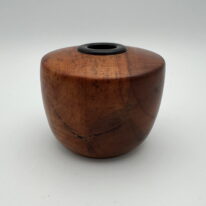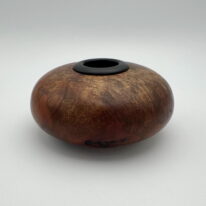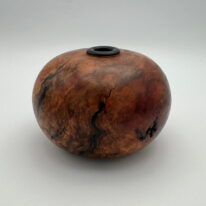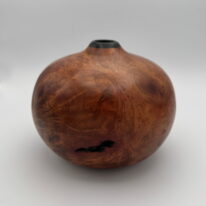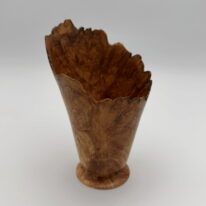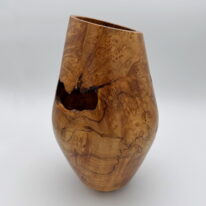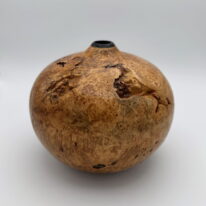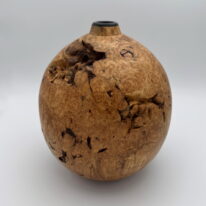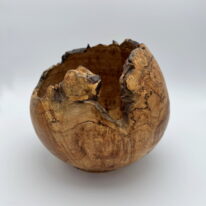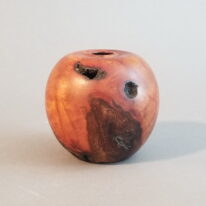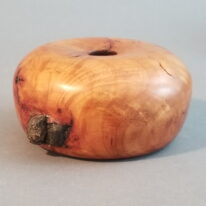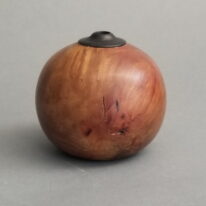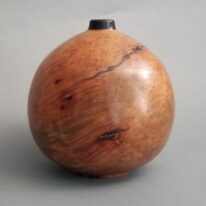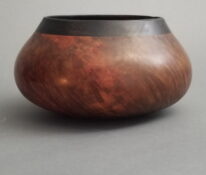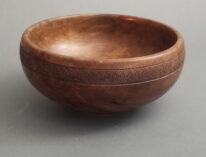
Wilman, Robert
My journey in woodworking began as a teenager, renovating my mother’s house. I have been a woodworker for over 40 years. I turn using mostly salvage wood, often cuttings diverted from the path to the fireplace. I’m continually drawn to the interplay of form, colour, and texture in my work.
Wood turning can be both precise, using templates and measurements, or more freeform and spontaneous. As a porous and dynamic material, wood’s cells shift and change with seasonal humidity. Many of my pieces feature spalting, the beautiful fungal patterns that naturally develop in wood.
The base material for most of my work comes from native maple, ornamental trees, or fruit woods. Like a crack in a rock, imperfections such as splits, cracks, or exposed bark are often embraced in my pieces, as they represent the natural beauty of the wood.
Turning is a new exploration each time I step up to the lathe. I begin with a rough concept, mounting a log or log section on the lathe. After rough turning away the bark and weathered surface, the grain, defects, and inclusions guide the evolution of the piece. While certain forms may be repeated, every piece is unique.
Read moreSurface textures are created through a mix of power and hand-carving tools, and decoration may include charring, paints, dyes, stains, or metal leaf. Smaller turnings often incorporate imported or exotic woods.
I prefer natural finishes, typically a blend of oil and beeswax, which imparts a warm, translucent glow to the wood. Other finishes I use include shellac, derived from the lac beetle, and high-speed polishing with natural compounds and vegetable waxes.
Caring for my work is much like maintaining fine furniture — regular dusting and occasional polishing. As with most artwork, it’s best to avoid direct sunlight to preserve the beauty of the piece.

